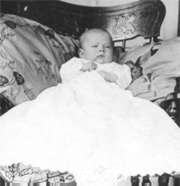|
Heading 1
Algebra II
The standards below outline the content for a one-year course in Algebra
II. Students enrolled in Algebra II are assumed to have mastered those
concepts outlined in the Algebra I standards. A thorough treatment of
advanced algebraic concepts is provided through the study of functions,
polynomials, rational expressions, complex numbers, matrices, and
sequences and series. Emphasis should be placed on practical applications
and modeling throughout the course of study. Oral and written
communication concerning the language of algebra, logic of procedures, and
interpretation of results also should permeate the course.
These standards include a transformational approach to graphing functions.
Transformational graphing uses translation, reflection, dilation, and rotation
to generate a "family of graphs" from a given graph and builds a strong
connection between algebraic and graphic representations of functions.
Students will vary the coefficients and constants of an equation, observe
the changes in the graph of the equation, and make generalizations that
can be applied to many graphs.
Graphing utilities (graphing calculators or computer graphing simulators) and
spreadsheets will be used by students and teachers. Graphing utilities
enhance the understanding of realistic applications through mathematical
modeling and aid in the investigation and study of functions and their
inverses. They also provide an effective tool for solving/verifying equations
and inequalities. Any other available technology that will enhance student
learning should be used.
AII.1 | AII.2 | AII.3 | AII.4 | AII.5 | AII.6 | AII.7 | AII.8 | AII.9 | AII.10
AII.11 | AII.12 | AII.13 | AII.14 | AII.15 | AII.16 | AII.17 | AII.18 | AII.19 |
AII.20
AII.1 The student will identify field properties, axioms of equality and
inequality, and properties of order that are valid for the set of real numbers
and its subsets, complex numbers, and matrices.
AII.2 The student will add, subtract, multiply, divide, and simplify rational
expressions, including complex fractions.
AII.3 The student will
add, subtract, multiply, divide, and simplify radical expressions
containing positive rational numbers and variables and expressions
containing rational exponents; and
write radical expressions as expressions containing rational exponents,
and vice versa.
AII.4 The student will solve absolute value equations and inequalities
graphically and algebraically. Graphing calculators will be used both as a
primary method of solution and to verify algebraic solutions.
AII.5 The student will identify and factor completely polynomials
representing the difference of squares, perfect square trinomials, the sum
and difference of cubes, and general trinomials.
AII.6 The student will select, justify, and apply a technique to solve a
quadratic equation over the set of complex numbers. Graphing calculators
will be used for solving and confirming algebraic solutions.
AII.7 The student will solve equations containing rational expressions and
equations containing radical expressions algebraically and graphically.
Graphing calculators will be used for solving and confirming algebraic
solutions.
AII.8 The student will recognize multiple representations of functions (linear,
quadratic, absolute value, step, and exponential functions) and convert
between a graph, a table, and symbolic form. A transformational approach
to graphing will be employed through the use of graphing calculators.
AII.9 The student will find the domain, range, zeros and inverse of a
function, the value of a function for a given element in its domain, and the
composition of multiple functions. Functions will include those that have
domains and ranges that are limited and/or discontinuous. The graphing
calculator will be used as a tool to assist in investigation of functions,
including exponential and logarithmic.
AII.10 The student will investigate and describe the relationships between
the solution of an equation, zero of a function, x-intercept of a graph, and
factors of a polynomial expression through the use of graphs.
AII.11 The student will use matrix multiplication to solve practical problems.
Graphing calculators or computer programs with matrix capabilities will be
used to find the product.
AII.12 The student will represent problem situations with a system of linear
equations and solve the system using the inverse matrix method. Graphing
calculators or computer programs with matrix capability will be used to
perform computations.
AII.13 The student will solve systems of linear inequalities and linear
programming problems and describe the results both orally and in writing. A
graphing calculator will be used to facilitate solutions to linear programming
problems.
AII.14 The student will solve nonlinear systems of equations, including
linear-quadratic and quadratic-quadratic, algebraically and graphically. The
graphing calculator will be used as a tool to visualize graphs and predict the
number of solutions.
AII.15 The student will recognize the general shape of polynomial functions,
locate the zeros, sketch the graphs, and verify graphical solutions
algebraically. The graphing calculator will be used as a tool to investigate
the shape and behavior of polynomial functions.
AII.16 The student will investigate and apply the properties of arithmetic
and geometric sequences and series to solve problems, including writing the
first n terms, finding the nth term, and evaluating summation formulas.
Notation will include sigma and 'a sub n'.
AII.17 The student will perform operations on complex numbers and express
the results in simplest form. Simplifying results will involve using patterns of
the powers of i.
AII.18 The student will identify conic sections (circle, ellipse, parabola, and
hyperbola) from his/her equations. Given the equations in (h, k) form,
students will sketch graphs of conic sections, using transformations.
AII.19 The student will collect and analyze data to make predictions, write
equations, and solve practical problems. Graphing calculators will be used to
investigate scatterplots to determine the equation for a curve of best fit.
AII.20 The student will identify, create, and solve practical problems
involving a combination of direct and inverse variations.
|


